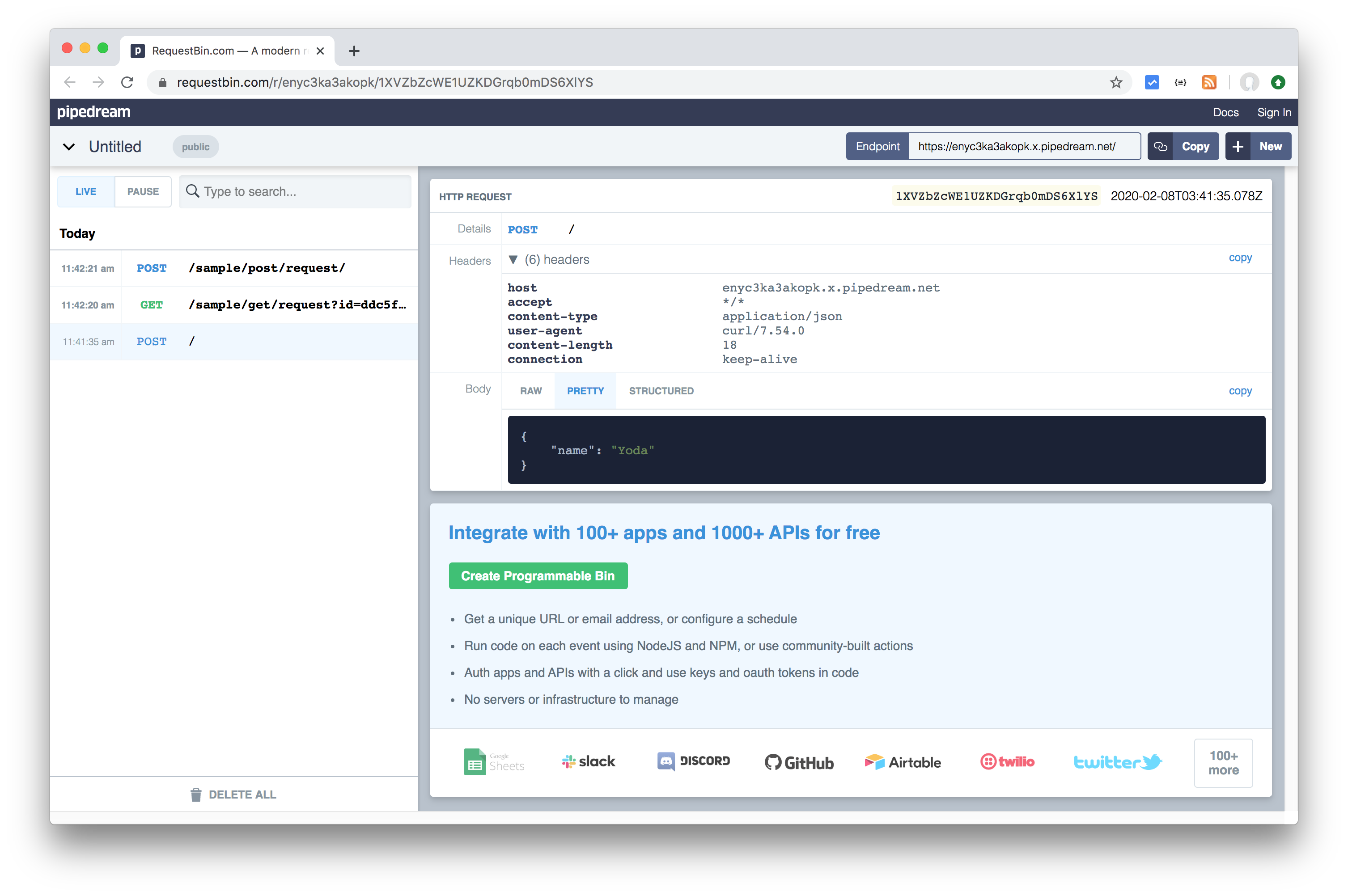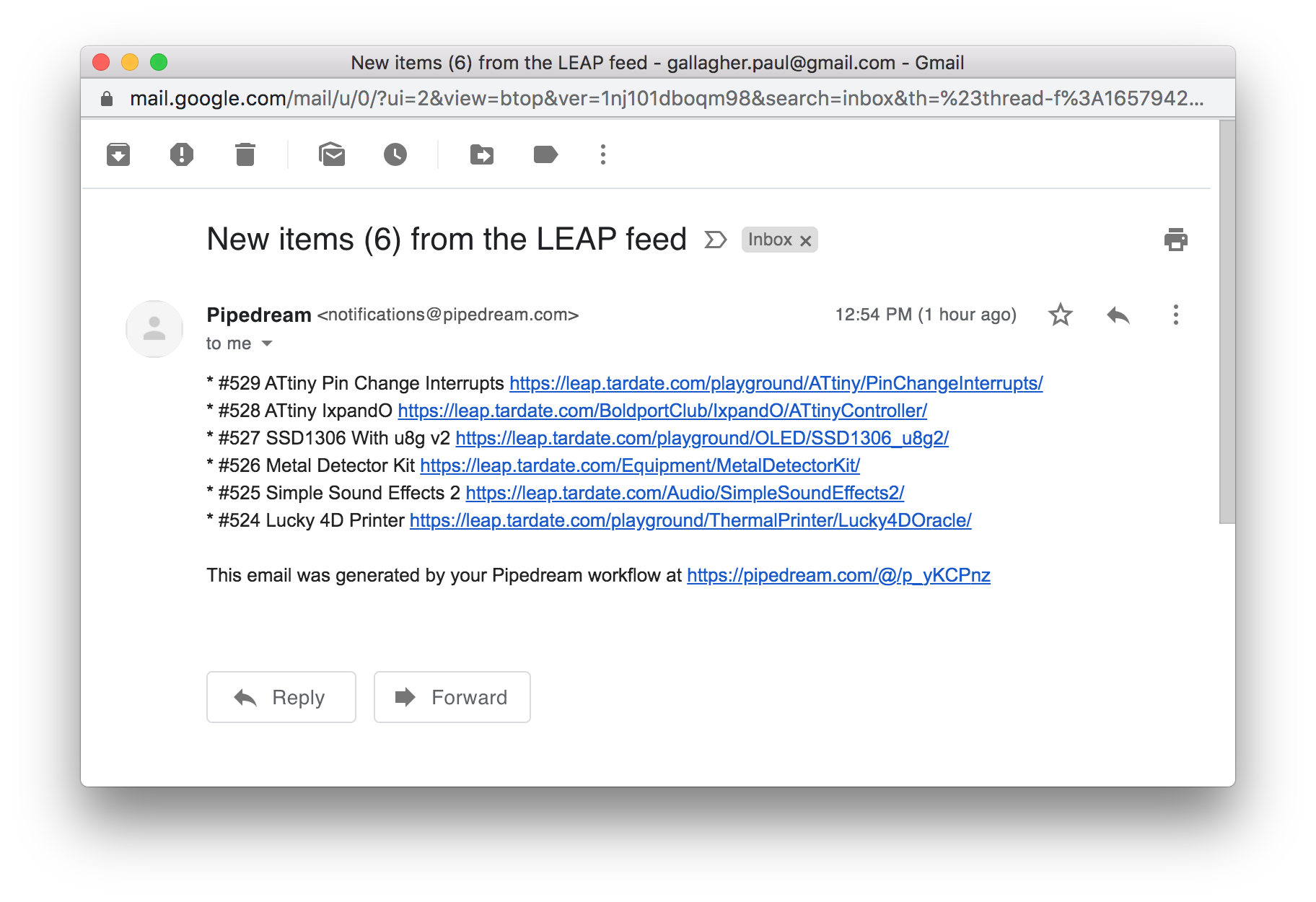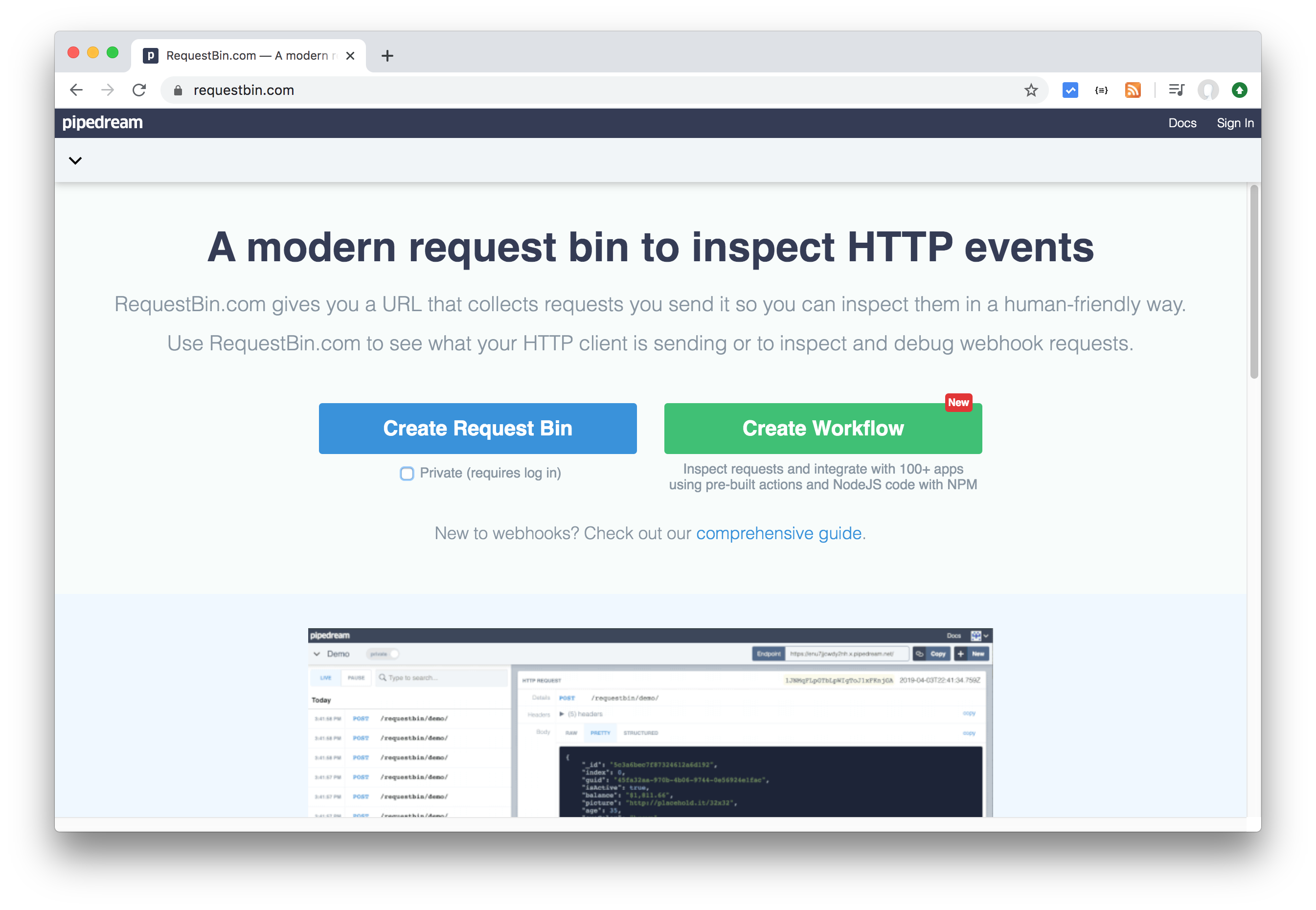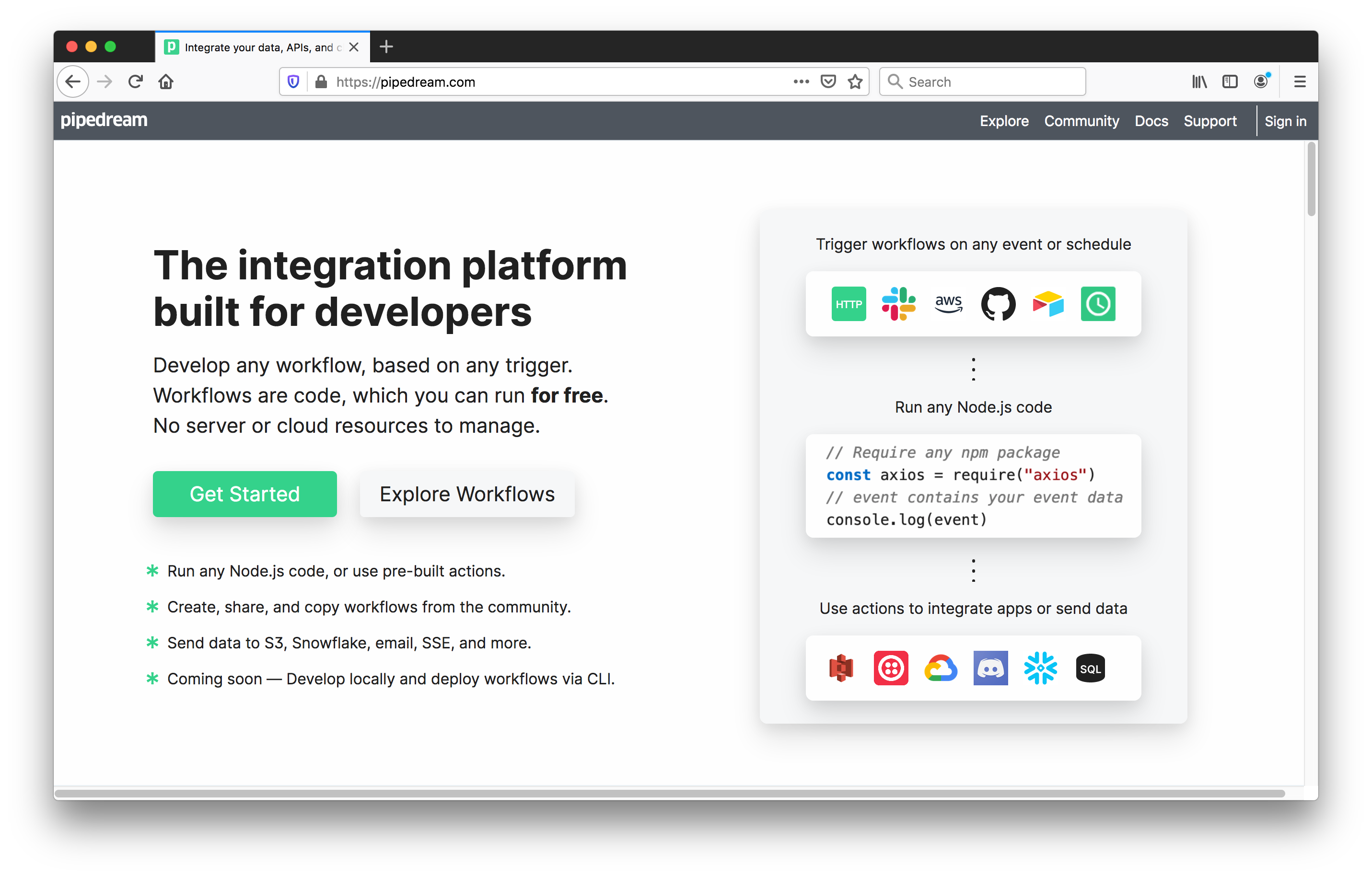#199 Request Bin
Using request bin services to inspect HTTP events - Runscope self-hosted and newer Pipedream services with workflows aka programmable bins.
Notes
I was a long-time user of the old Runscope requestb.in service for capturing real payloads from live services. It was a shame when they had to shutter the public service due to abuse, but the silver lining was how they open-sourced a version of requestbin that we could run for ourselves.
Runscope have since focused on their core API monitoring service.
As I was updating my notes on running a request bin, I stumbled upon a new(?) player in town - Pipedream. As far as I can tell, they only have the free offering for now, but are planning toadd paid tiers in future.
I took pipedream for a test drive and was really impressed - in addition to being slickly integrated, the workflow features make it the IFTTT of request bining.
Self-hosting requestbin
See the requestbin repo for instructions. It is trivial to deploy a personal instance to heroku:
$ git clone git://github.com/Runscope/requestbin.git
$ cd requestbin
$ heroku create
$ heroku addons:add heroku-redis
$ heroku config:set REALM=prod
$ git push heroku master
The application runs with the classic Runscope interface…
Using Pipedream
Pipedream run two services:
- requestbin.com offers traditional request bins; the original service from Pipedream launched Dec 2018. It will apparently continue as a stand-alone service.
- pipedream.com which has all the new goodness - including private bins, logging and workflows. Publically launched in Oct 2019.
Simple Request Bins
The requestbin.com domain offers the choice of public or private request bins, or workflows..
Choosing a public request bin behaves very much like good old requestb.in, but with a snazzier UI:

Workflows - Programmable Bins
The funs starts when you choose a worflow, or go direct to pipedream.com:
A workflow basically means that instead of just logging the incoming payload, it is possible to configure/script a series of steps that can, for example:
- inspect and log details of the request
- transform or process the request
- log data for later analysis or use
- trigger external services
- send notifications e.g. via email, SMS
- trigger a “smart reply”
A good first step is to explore featured workflows and play with them, with occassional reference to the docs of course.
Workflow Example
I copied some ideas from featured workflows and put together a neat little service that doesn’t even need an incoming trigger request.
The “Mail me new items from the LEAP feed” is:
- triggered on a schedule (cron)
- pulls the RSS (Atom) feed from my LEAP (Little Electronics and Arduino Projects) repo
- summarises any new posts (by comparing with checkpoint that persists across executions)
- generates and sends me an email with the new posts
All pretty cool for something that started life as an web request monitor!
The workflow editor is pretty slick, and I believe powered by the Monaco editor.
Here’s my workflow in the editor (anyone can copy the workflow and make their own changes):
It generates a simple text mail that is delivered through pipedream’s servers FOC!

Credits and References
- pipedream.com - the new Pipedream platform
- requestbin.com - the original Pipedream request bin service
- requestbin - the open source request bin self-hosted service
- Runscope




